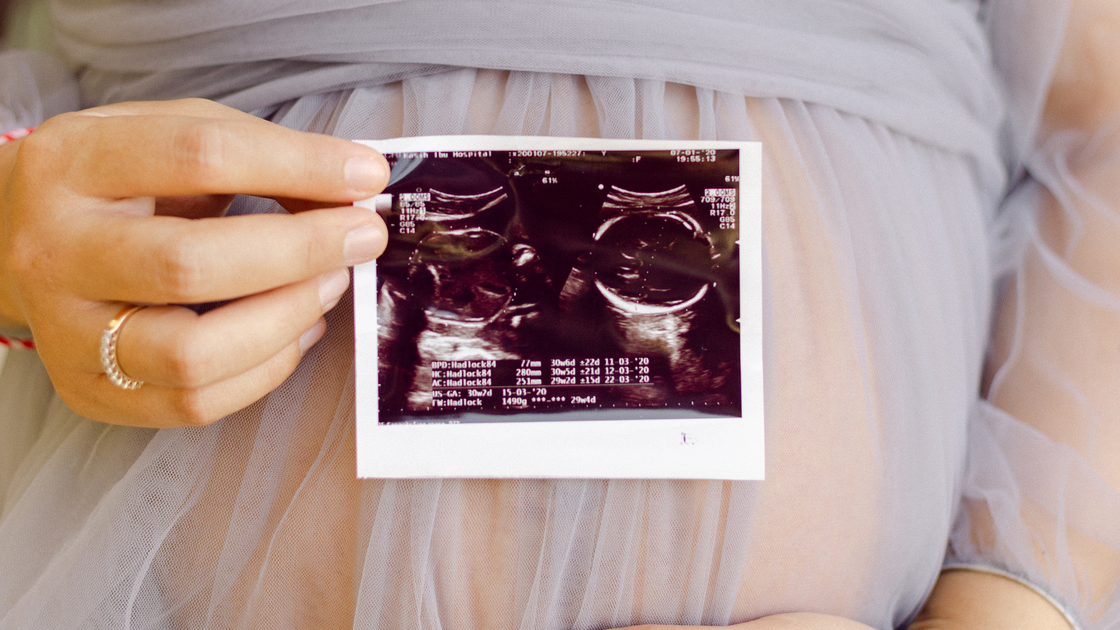In Vitro Fertilization Treatment: Everything You Need to Know About IVF
Being pregnant is the real miracle of life. For some couples, having a child is a tremendous sensation and change in their life. But sometimes, couples can face problems with conceiving and then making a dream, in reality, can be challenging for them. That's why assisted reproductive technologies suggest so many fertility treatments for couples who are dreaming about family. For some couples, In Vitro Fertilization can be salvation in infertility issues and transform their dream into reality.

What is IVF (In Vitro Fertilization)?
In Vitro Fertilisation is a part of Assisted Reproductive Technologies and this fertility treatment works by removing eggs, extracting sperm cells, and then manually combining the eggs and sperm in a laboratory dish. The embryo is then transferred to the uterus.
IVF procedure involves five main stages:
- Ovarian stimulation: during the first step, a woman takes medication to produce healthy eggs. Most months, women make only one egg, but with IVF, they stimulate 10-15 eggs to increase their chances of becoming pregnant.
- Egg retrieval: the next step of IVF treatment involves the harvesting of eggs. Egg retrieval is done while a woman sleeps under a general anaesthetic. Once completed, an embryologist examines the eggs under a microscope to count them.
- Fertilization: the next thing that happens is the fertilization of eggs and sperm. The timing is crucial here. The eggs are retrieved, and then, after a few hours, they're fertilized with sperm. There are two ways to fertilize an egg: Conventional insemination or ICSI. In conventional insemination, the sperm is placed in a dish containing an egg to fertilize on their own. In ICSI, one sperm is injected into the cytoplasm of a fertilized egg using a needle.
- Blastocyst culture: once the sperm fertilizes the egg, it becomes an embryo. The embryo is then placed in a unique incubator by an embryologist, where the embryo is provided with the proper condition to develop and grow. Adequate monitoring of the embryo is done for 5-6 days.
- Embryo transfer: the final step is Embryo Transfer. Once the embryo develops to the blastocyst stage, it is implanted using a small catheter tube into the uterus. It usually takes place within 3-5 days after fertilization. Once the embryo is transferred to the uterus, it is allowed to the implant, and a blood test is carried on after two weeks to measure the hormone HCG.
Who Should Consider IVF Treatment?
The inability to get pregnant is increasingly common. Infertility can be a problem for both young and older women; it's more common for older women to have trouble conceiving. Besides age, there is a list of possible reasons for undergoing IVF:
- Endometriosis: endometriosis is a condition when tissue from the inside of the uterus starts growing elsewhere in your body. The extra tissue can cause scarring and Inflammation that affects nearby organs, including your ovaries, uterus, and fallopian tubes.
- PCOS (Polycystic Ovary Syndrome): polycystic ovary syndrome is a hormonal condition caused by an excess of male hormones and a deficiency of female hormones. A lack of ovulation characterizes it because of the imbalance in male and female hormones.
- Blocked fallopian tubes: the fallopian tubes, also known as the oviducts, are the female reproductive organs that connect the ovaries to the uterus. They carry an egg from the ovaries to the uterus during ovulation every month. If the fallopian tubes are blocked, sperm cannot reach the egg, or if an egg is fertilized, it cannot get to the uterus. A common cause of blocked fallopian tubes is scar tissue, infection, and adhesion. If there's any damage or blockage in the fallopian tube, the sperm and egg may not meet correctly.
- Premature ovarian failure: ovarian failure, also known as primary ovarian insufficiency, is when the ovaries lose their normal function of releasing a mature egg every month. A woman diagnosed with ovarian failure may have menopause earlier than the average.
- Uterine fibroids: uterine fibroids are non-cancerous tumours in the uterus. They occur in women during their childbearing years and are very common. Fibroids may grow on the wall of the uterus.
- Low sperm quality: a common cause of infertility is a low sperm count and motility. These issues, coupled with poor sperm quality, represent 90% of all infertility cases in men and anywhere from 20% to 40% in couples.
- Low quality of eggs: sometimes infertility can result from egg quality problems caused by ageing or illness. In these cases, donor eggs can be used to develop embryos, then transferred to the woman's reproductive system.
- Unexplained infertility:
secondary infertility is an incapability to conceive or carry a healthy pregnancy to live after previously giving birth. It usually refers to couples trying to conceive for six months to one year.
What are The Possible Risks of IVF?
In Vitro Fertilisation has many advantages and allows making a dream of having a child into reality, but as with all medical procedures and treatments, this treatment can have risks and complications. Before couples decide to undergo IVF, getting familiar with all possible risks and difficulties connected with IVF treatment is better. There is a list of possible complications associated with fertility treatment:
- Ectopic pregnancy
- Multiple pregnancies
- Ovarian hyperstimulation syndrome
- Fertility medication side effects
Ovarian hyperstimulation syndrome (OHSS): ovarian hyper-stimulation syndrome is one of the complications associated with infertility treatment, especially in In Vitro Fertilization (IVF). That's why recipients who undergo IVF need to be aware of potential risks. Ovarian hyperstimulation syndrome is an exaggerated response to excess hormones in women undergoing fertility drugs. The most common cause is taking injectable fertility medications for ovarian stimulation when it occurs. OHSS causes the ovaries to swell and become painful. The signs and symptoms of OHSS vary from mild to severe cases. The symptoms of mild OHSS include:
- Mild and severe addominal pain
- Nausea
- Bloating
- Severe pain
- Mild weight gain
Some women are at higher risk and have more chances of developing OHSS if:
- They suffer from polycystic ovarian syndrome (PCOS)
- They are under 30 years old
- The suffered OHSS before
- The have 20 or more eggs collected
Ectopic pregnancy: ectopic pregnancy is another risk of fertility treatments as In Vitro Fertilization and Intrauterine Insemination. An ectopic pregnancy is a condition in which an embryo's development occurs outside the womb. The majority of ectopic pregnancies occur in the fallopian tubes. But the fallopian tubes are incapable of holding a developing embryo, so it cannot develop properly.
Multiple pregnancy: multiple pregnancies is when the mother carries more than one baby in her womb. The most common type of multifetal pregnancy is twins, where two babies develop simultaneously in the womb. One in every twin pregnancy results in at least one baby dying or having a significant disability, and twin pregnancy increases the mother's risk of most pregnancy-related health problems.
There are a few problems associated with multiple pregnancies:
- Anaemia
- Miscarriage
- Postpartum haemorrhage
- Pre-eclampsia
- Gestational diabetes
Miscarriage: unfortunately, there is evidence that pregnancies conceived via in vitro fertilization (IVF) carry a slightly increased risk of miscarriage and congenital disabilities than natural pregnancies. According to a study by the American Pregnancy Association, there is a 15% to 20% chance of Miscarriage in healthy women who conceive naturally. Due to factors like maternal age, egg quality, and uterine abnormalities, women with IVF pregnancies are at higher risk of miscarriage.
Fertility medication side effects: there is a list of possible medications side effects:
- Hot flashes
- Nausea
- Bloating
- Feeling irritable
- Headaches
- Blurred vision
- Changes in cervical mucus
- Rarely multiple births
- Swelling at the injection site
What Tests are Done Before The IVF Procedure?
When couples decide to have In Vitro Fertilisation treatment while visiting a fertility specialist, they will get a list of necessary tests before beginning the treatment. But in the beginning, the woman will need to undergo ovarian reserve testing. This testing consists of a few hormone blood tests that will allow understanding how many eggs the woman has. Also, during these tests, women need to test such hormones as AMH (Anti-Mullerian Hormone), FSH (Follicle- Stimulating hormone) and estradiol (estrogen steroid hormone). During the Follicle -Stimulating hormone test, the fertility specialist will get information about the quality of a woman's eggs. Besides these tests, there is a list of possible difficulties that couple need to undergo:
- Testing for infectious diseases
- Hysterosalpingo-contrast-sonography (HyCoSy)
- Semen evaluation
- Test for prolactin
Based on the results of tests, the fertility specialist and couple will choose safe and more effective fertility treatment for a couple.

